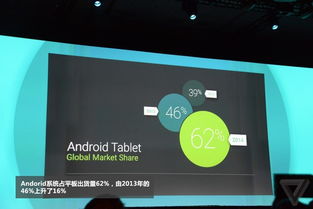
Android on PC: A Comprehensive Guide
Are you an Android enthusiast looking to enjoy your favorite apps and games on a larger screen? Or perhaps you’re a professional who needs to access Android applications on your PC for work? Whatever your reason, running Android on your PC can be a game-changer. In this article, we’ll delve into the various methods and tools available to run Android on your PC, ensuring you have all the information you need to make an informed decision.
Why Run Android on PC?

There are several reasons why you might want to run Android on your PC:
-
Enjoy Android games and apps on a larger screen.
-
Access Android applications that are not available on your PC’s operating system.
-
Use your Android device as a remote control for your PC.
-
Develop Android applications on a larger screen.
Methods to Run Android on PC

There are several methods to run Android on your PC, each with its own set of advantages and disadvantages. Let’s explore some of the most popular options:
1. Android Emulators
Android emulators are software applications that mimic the Android operating system on your PC. They allow you to run Android apps and games on your computer. Here are some popular Android emulators:
-
Bluestacks: One of the most popular Android emulators, Bluestacks offers a user-friendly interface and high performance. It supports a wide range of Android apps and games.
-
LDPlayer: LDPlayer is another popular emulator that offers excellent performance and compatibility with a wide range of Android apps and games.
-
NoxPlayer: NoxPlayer is a lightweight emulator that offers a user-friendly interface and high performance. It’s a good choice for those who want to run Android apps and games on a low-end PC.
2. Android-x86
Android-x86 is an open-source project that aims to bring the Android operating system to x86-based PCs. It’s a complete operating system that you can install on your PC’s hard drive or a USB drive. Here are some key features of Android-x86:
-
Supports a wide range of hardware configurations.
-
Can be installed on a hard drive or USB drive.
-
Includes a full suite of Android apps and games.
3. Dual Boot
Dual booting involves installing two operating systems on your PC, such as Windows and Android. This allows you to switch between the two operating systems as needed. Here’s how to dual boot Android on your PC:
-
Download the Android ISO file from the Android-x86 website.
-
Use a tool like Rufus to create a bootable USB drive from the ISO file.
-
Boot your PC from the USB drive and follow the on-screen instructions to install Android.
-
Configure your PC to dual boot between Windows and Android.
Comparing Android Emulators and Android-x86

Here’s a table comparing the two most popular methods for running Android on your PC:
| Method | Android Emulators | Android-x86 |
|---|---|---|
| Performance | High | Depends on hardware |
| Compatibility | High | High |
| Installation | Easy | Complex |
| System Integration | Low | High |
Conclusion
Running Android on your PC can be a great way to enjoy your favorite apps and games on a larger screen or access Android applications that are





